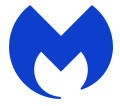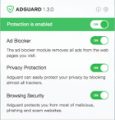What is DiscoveryHandler
DiscoveryHandler is an adware application that targets Mac computers. Adware sometimes named ‘ad-supported’ software is a type of harmful programs that displays unwanted advertisements. DiscoveryHandler can display advertisements in form of pop up windows, discount offers, promos or even fake alerts on the internet browser. It can seriously affect your privacy, your computer’s performance and security.
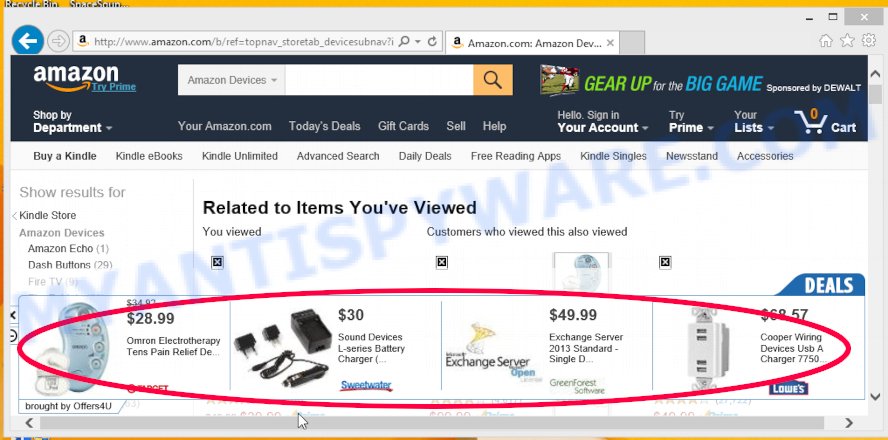
Unwanted ads
How does DiscoveryHandler get on your Mac
Adware usually comes on Mac computers with free apps. In most cases, it comes without the user’s knowledge. Therefore, many users aren’t even aware that their MAC system has been affected by adware. Please follow the easy rules in order to protect your MAC from any adware: do not install any suspicious applications, read the user agreement and select only the Custom, Manual or Advanced setup type, do not rush to click the Next button. Also, always try to find a review of the application on the Net. Be careful and attentive!
Threat Summary
| Name | DiscoveryHandler, DiscoveryHandler 1.0 app |
| Type | adware, potentially unwanted program (PUP), Mac virus, Mac malware |
| Detection Names | Osx.Adware.Cimpli, Adware/Adload!OSX, ApplicUnwnt, Trojan-Downloader.OSX.Adload, OSX.Trojan.Gen, Program:MacOS/Vigram.A, Adware.MAC.Generic and MacOS.Agent-MT |
| Distribution | Freeware installers, fake update tools, dubious pop-up ads and torrent downloads |
| Symptoms | Your web browser is redirected to web-sites you did not want, browser pop ups appear and recommend fake Jave updates, new entries appear in your Applications folder, an unwanted plugin appears in your web browser, your web-browser search engine has replaced without your permission, speed test good but internet slow. |
| Removal | DiscoveryHandler removal guide |
How to Remove DiscoveryHandler adware (removal steps)
In the tutorial below, we’ll try to cover Safari, Mozilla Firefox and Chrome and provide general advice to remove DiscoveryHandler . You may find some minor differences in your Mac OS install. No matter, you should be okay if you follow the steps outlined below: remove all suspicious and unknown programs, reset internet browsers settings, use free malware removal tools. Read it once, after doing so, please bookmark this page (or open it on your smartphone) as you may need to exit your browser or restart your computer.
To remove DiscoveryHandler, execute the following steps:
- Remove unwanted profiles on Mac device
- Delete DiscoveryHandler associated software by using the Finder
- Remove DiscoveryHandler related files and folders
- Scan your Mac with MalwareBytes
- Remove DiscoveryHandler from Safari, Chrome, Firefox
- How to stay safe online
Remove unwanted profiles on Mac device
DiscoveryHandler can install a configuration profile on the Mac system to block changes made to the browser settings. Therefore, you need to open system preferences, find and delete the profile installed by the adware software.
Click Apple menu ( ![]() ) > System Preferences.
) > System Preferences.
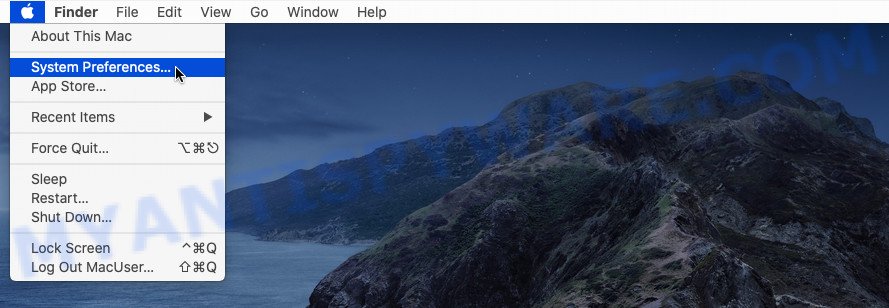
In System Preferences, select Profiles. if there is no Profiles in the list of preferences, that means there are no profiles installed on the Mac computer. If there is Profiles in the list, then click on it, then select a profile associated with DiscoveryHandler.
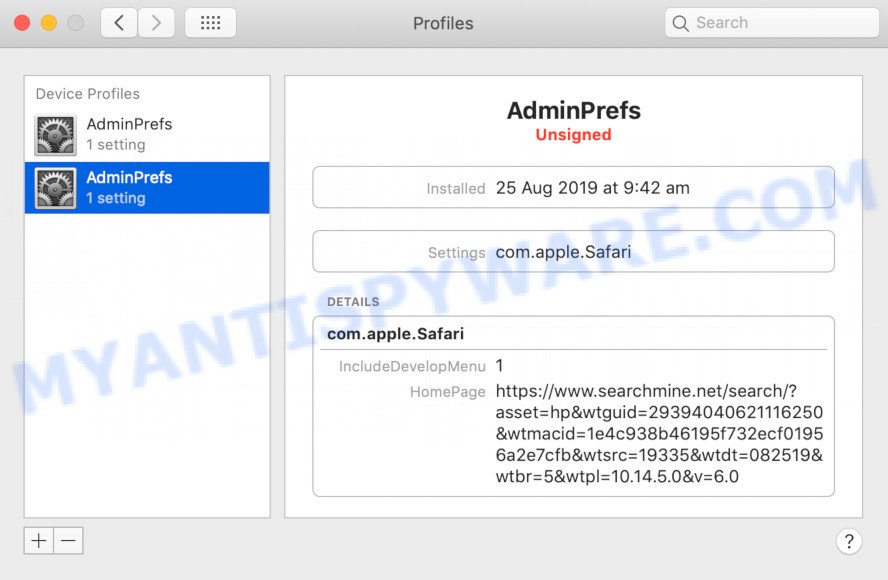
To delete a malicious profile, click on the minus button ( – ) located at the bottom-left of the Profiles screen.
Delete DiscoveryHandler associated software by using the Finder
In order to remove adware software, PUPs and browser hijackers, open the Finder and click on “Applications”. Check the list of installed programs. For the ones you do not know, run an Internet search to see if they are browser hijackers, adware and potentially unwanted programs. If yes, delete them off. Even if they are just a programs which you do not use, then uninstalling them off will increase your MAC OS start up time and speed dramatically.
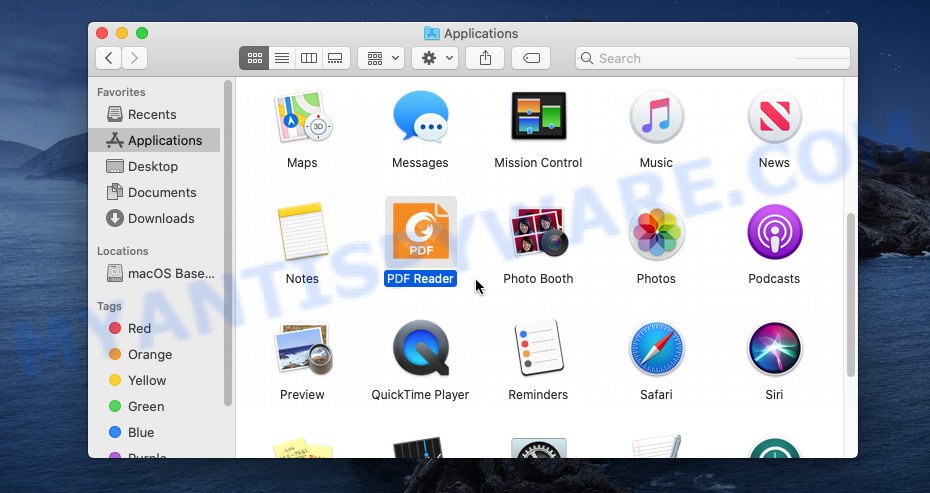
- Open the Finder.
- Click “Applications”.
- It will display a list of all software installed on the Apple Mac.
- Scroll through the all list, and remove suspicious and unknown applications. Pay maximum attention to the program you installed last.
- Drag the suspicious program from the Applications folder to the Trash.
- Empty Trash.
Remove DiscoveryHandler related files and folders
Now you need to try to find DiscoveryHandler related files and folders, and then delete them manually. You need to look for these files in certain directories. To quickly open them, we recommend using the “Go to Folder…” command.
DiscoveryHandler creates several files, these files must be found and removed. Below is a list of files associated with this unwanted program.
- /Library/LaunchDaemons/com.DiscoveryHandler.system.plist
- ~/Library/LaunchAgents/com.DiscoveryHandler.service.plist
- /Library/Application Support/.(RANDOM)/System/com.DiscoveryHandler.system
- ~/Library/Application Support/.(RANDOM)/Services/com.DiscoveryHandler.service.app
Some files created by DiscoveryHandler are hidden from the user. To find and delete them, you need to enable “show hidden files”. To do this, use the shortcut CMD + SHIFT + . Press once to show hidden files and again to hide them. There is another way. Click Finder -> Applications -> Utilities -> Terminal. In Terminal, paste the following text: defaults write com.apple.finder AppleShowAllFiles YES

Press Enter. Hold the ‘Option/alt’ key, then right click on the Finder icon in the dock and click Relaunch.
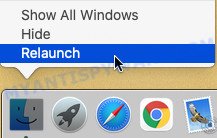
Click on the Finder icon. From the menu bar, select Go and click “Go to Folder…”. As a result, a small window opens that allows you to quickly open a specific directory.

Check for DiscoveryHandler generated files in the /Library/LaunchAgents folder

In the “Go to Folder…” window, type the following text and press Go:
/Library/LaunchAgents
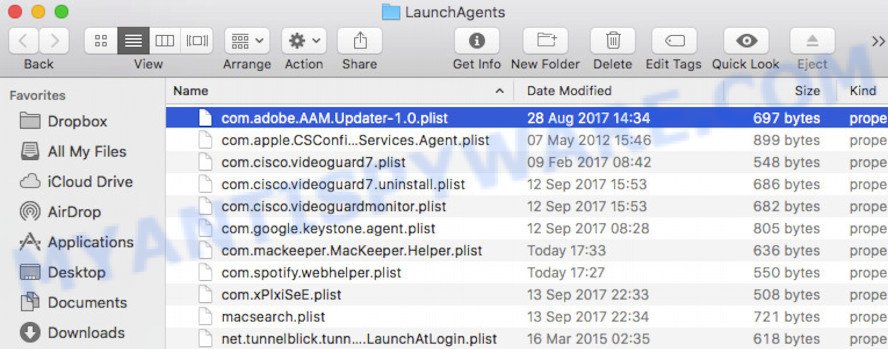
This will open the contents of the “/Library/LaunchAgents” folder. Look carefully at it and pay special attention to recently created files, as well as files that have a suspicious name. Move all suspicious files to the Trash. A few examples of files: installapp.plist, com.machelper.plist, com.google.defaultsearch.plist, , macsearch.plist, com.DiscoveryHandler.service.plist, search.plist and com.net-preferences.plist. Most often, potentially unwanted programs, adware and browser hijackers create several files with similar names.
Check for DiscoveryHandler generated files in the /Library/Application Support folder

In the “Go to Folder…” window, type the following text and press Go:
/Library/Application Support
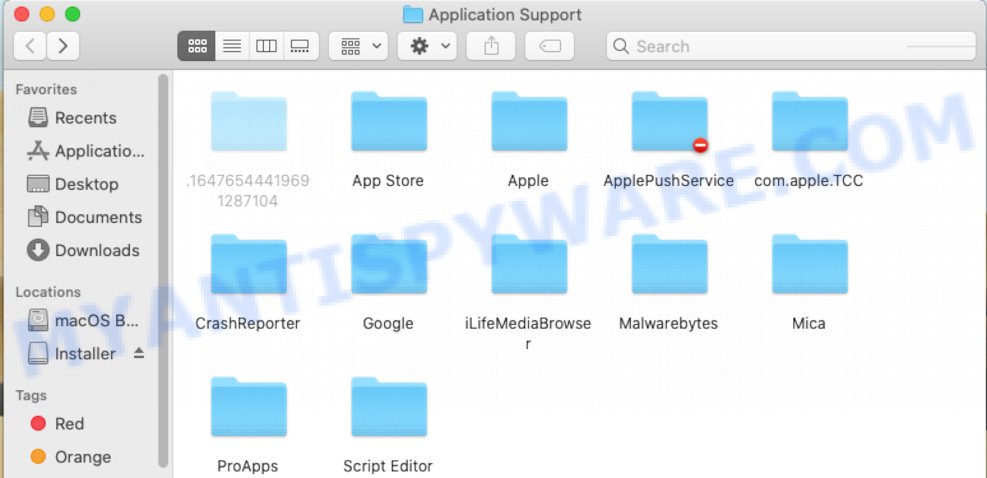
This will open the contents of the “Application Support” folder. Look carefully at its contents, pay special attention to recently added/changed folders and files. Check the contents of suspicious folders, if there is a file with a name similar to com.DiscoveryHandler.system, then this folder must be deleted. Move all suspicious folders and files to the Trash.
Check for DiscoveryHandler generated files in the “~/Library/LaunchAgents” folder

In the “Go to Folder…” window, type the following text and press Go:
~/Library/LaunchAgents

Proceed in the same way as with the “/Library/LaunchAgents” and “/Library/Application Support” folders. Look for suspicious and recently added files. Move all suspicious files to the Trash.
Check for DiscoveryHandler generated files in the /Library/LaunchDaemons folder
In the “Go to Folder…” window, type the following text and press Go:
/Library/LaunchDaemons

Carefully browse the entire list of files and pay special attention to recently created files, as well as files that have a suspicious name. Move all suspicious files to the Trash. A few examples of files to be deleted: com.search.system.plist, com.DiscoveryHandler.system.plist, com.installapp.system.plist, com.macsearch.system.plist and com.machelper.system.plist. In most cases, browser hijackers, potentially unwanted programs and adware create several files with similar names.
Scan your Mac with MalwareBytes
Manual DiscoveryHandler removal requires some computer skills. Some files and system entries that created by the adware may be not fully removed. We suggest that use MalwareBytes Anti Malware to scan the Mac device. Moreover, this program will allow you to remove PUPs, toolbars, adware software and browser hijackers that your MAC can be affected too.
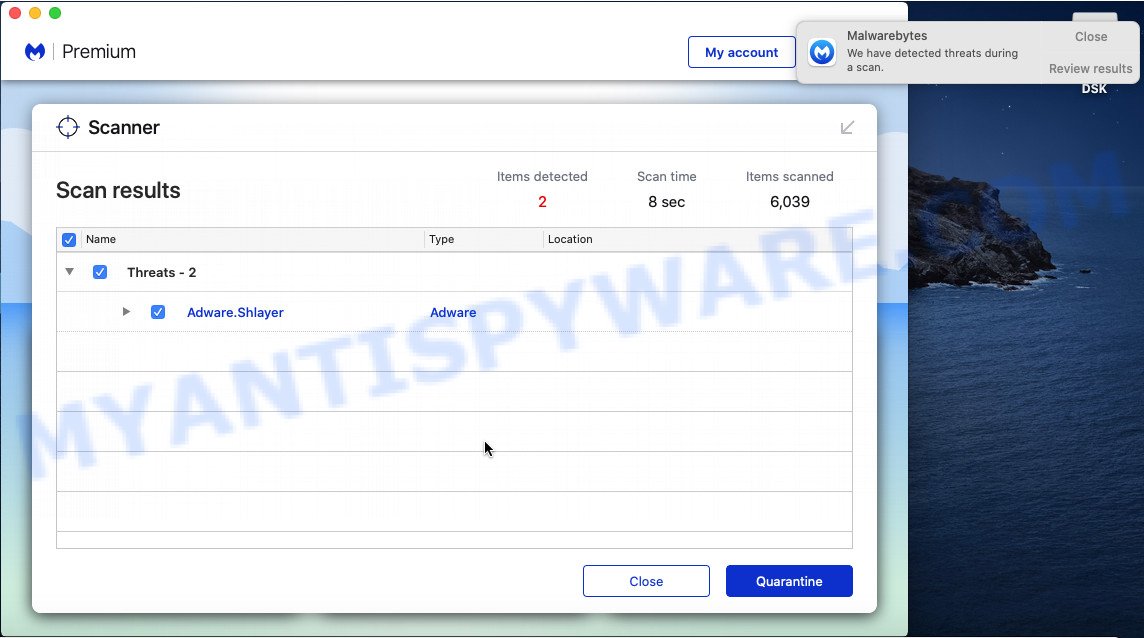
- Please go to the link below to download MalwareBytes Anti-Malware.
Malwarebytes Anti-malware (Mac)
21017 downloads
Author: Malwarebytes
Category: Security tools
Update: September 10, 2020
- When downloading is done, please close all applications and open windows on your machine. Run the downloaded file. Follow the prompts.
- The MalwareBytes will open and open the main window.
- Further, click the “Scan” button to look for DiscoveryHandler adware. This procedure can take some time, so please be patient. While the tool is checking, you can see how many objects and files has already scanned.
- After finished, the results are displayed in the scan report.
- In order to delete all threats, simply click the “Remove Selected Items” button.
- Close the Anti-Malware and continue with the next step.
Remove DiscoveryHandler from Safari, Chrome, Firefox
Remove unwanted extensions is a simple solution to get rid of DiscoveryHandler adware and revert back web browser’s settings that have been changed by adware.
You can also try to get rid of DiscoveryHandler adware by reset Google Chrome settings. |
If you are still experiencing issues with DiscoveryHandler adware removal, you need to reset Firefox browser. |
|
How to stay safe online
If you want to get rid of unwanted advertisements, web browser redirects and popups, then install an ad blocker program such as AdGuard. It can block unwanted advertisements and pop-ups, stop web pages from tracking your online activities when using the Mozilla Firefox, Safari and Chrome. So, if you like browse the Net, but you do not like annoying ads and want to protect your computer from malicious web-sites, then the AdGuard is your best choice.
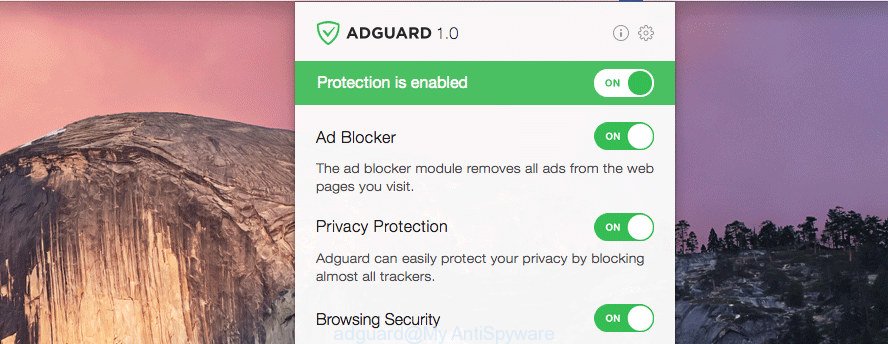
AdGuard can be downloaded from the following link.
3779 downloads
Author: © Adguard
Category: Security tools
Update: January 17, 2018
When downloading is done, launch the downloaded file. You will see the “Setup Wizard” screen. Follow the prompts.
Each time, when you launch your MAC system, AdGuard will run automatically and stop intrusive advertisements, block malicious and misleading websites.
To sum up
Now your Apple Mac should be clean of the DiscoveryHandler adware. We suggest that you keep MalwareBytes Anti-Malware (to periodically scan your MAC for new adwares and other malicious software) and AdGuard (to help you stop annoying popup advertisements and harmful web pages). Moreover, to prevent any adware, please stay clear of unknown and third party apps.
If you need more help with DiscoveryHandler related issues, go to here.
